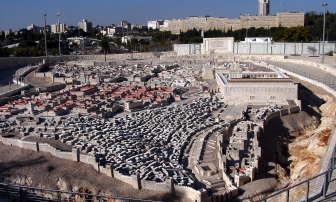Exhibition and Erasure/Art and Politics: Further Reading
Nadia Abu El-Haj, Facts on the Ground: Archaeological Practice and Territorial Self-Fashioning in Israeli Society (Chicago: University of Chicago Press, 2001).
Meron Benvenisti, City of Stone: The Hidden History of Jerusalem (Berkeley: University of California Press, 1966).
Pierre Bourdieu, “Social Space and Symbolic Power,” Sociological Theory 7.1 (1989): 14–25.
Ran Boytner, Lynn Swartz Dodd, and Bradley J. Parker, eds., Controlling the Past, Owning the Future: The Political Uses of Archaeology in the Middle East (Tucson: University of Arizona Press, 2010).
Thomas W. Davis, Shifting Sands: The Rise and Fall of Biblical Archaeology (Oxford: Oxford University Press, 2004).
Raphael Greenberg, “Contested Sites: Archaeology and the Battle for Jerusalem,” Jewish Quarterly 208 (Winter 2007): 1–7.
Lynn Meskell, ed., Archaeology Under Fire: Nationalism, Politics and Heritage in the Eastern Mediterranean and the Middle East (London: Routledge, 2002).
Eric M. Meyers and Carol Meyers, eds., Archaeology, Politics and the Media (Durham, N. C.: Duke University, 2009).
Noah Hysler Rubin, “Geography, Colonialism and Town Planning: Patrick Geddes’ Plan for Mandatory Jerusalem,” Cultural Geographies 18.2 (2011): 231–248.
Isaiah Silver, “Digging the Occupation: The Politics of Boycotts and Archaeology in Israel,” accessed May 10, 2016, http://savageminds.org/2014/07/06/digging-the-occupation-the-politics-of-boycotts-and-archeology-in-israel-bds-pt-3/.
Annabel Jane Wharton, Architectural Agents: The Delusional, Abusive, Addictive Lives of Buildings (Minneapolis: University of Minnesota Press, 2015).
✓ Not peer-reviewed
Annabel Wharton, “Exhibition and Erasure/Art and Politics: Further Reading,” Aggregate 4 (December 2016), https://doi.org/10.53965/CDMU5312.
